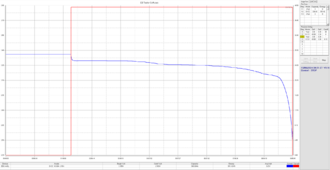TheAutomotiveEngineer
New Member
I’ve finally received my 8 EVE304Ah A-Grade Cells this week, and I’m thrilled to start designing the battery pack for our van build! I chose these particular cells along with a Multiplus2 (12V/3000W/230V), an MPPT for solar charging, and a DC/DC charger to meet our requirements.
However, since I’m new to building battery packs and 7.5kWh is a lot of energy to handle, I don’t want to do this alone. I’m looking for advice, suggestions, and insights from those who have experience or knowledge in this area. What components would you recommend for seamless integration?
First on the list is deciding the layout. My initial and preferred way is to configure parallel groups of 2 cells and put those in series. This is mainly cost-driven as it decreases the number of components needed to keep the system safe. However, I recognize that two separated banks might have a few advantages in terms of redundancy, though this doesn’t outweigh the cost argument at the moment. With two separated banks (4s2p), I expect to double up on relays, BMS monitors, and current sensors. If there are other compelling arguments for this "alternative" configuration, I’m open to discussing them.
Assuming I stick with the 2P4S configuration, I need to select an appropriate BMS. After some research, I’m considering the 123Electric BMS for these reasons:
Before moving forward, I’d like to clarify these initial questions to ensure a safe and robust system. Any insights, experiences, or recommendations would be greatly appreciated.
However, since I’m new to building battery packs and 7.5kWh is a lot of energy to handle, I don’t want to do this alone. I’m looking for advice, suggestions, and insights from those who have experience or knowledge in this area. What components would you recommend for seamless integration?
First on the list is deciding the layout. My initial and preferred way is to configure parallel groups of 2 cells and put those in series. This is mainly cost-driven as it decreases the number of components needed to keep the system safe. However, I recognize that two separated banks might have a few advantages in terms of redundancy, though this doesn’t outweigh the cost argument at the moment. With two separated banks (4s2p), I expect to double up on relays, BMS monitors, and current sensors. If there are other compelling arguments for this "alternative" configuration, I’m open to discussing them.
Assuming I stick with the 2P4S configuration, I need to select an appropriate BMS. After some research, I’m considering the 123Electric BMS for these reasons:
- Monitoring of cell current and temperature
- Relatively high balancing current
- Direct cell connection
- Clear documentation and easy-to-reach support
- Integration with Victron (though I’ve seen comments that it might not be fully supported – is this correct?)
Before moving forward, I’d like to clarify these initial questions to ensure a safe and robust system. Any insights, experiences, or recommendations would be greatly appreciated.




